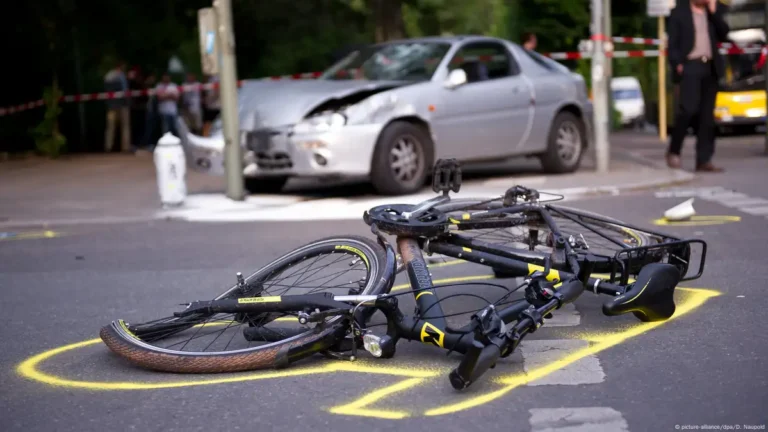Bicycling is a popular and eco-friendly mode of transportation, offering cyclists an efficient way to get around while staying fit. However, cycling on busy roads and streets also comes with risks, particularly when sharing the road with larger, faster vehicles. If you’ve been involved in a bicycle accident, it’s essential to understand your legal rights and responsibilities. Bicycle accident laws vary from state to state, which means your rights and options for seeking compensation may differ depending on where you live.
In this blog, we will help you understand the basics of bicycle accident laws in your state and provide valuable insight into how these laws can impact your accident claim and legal options.
1. State-Specific Bicycle Laws and Regulations
Each state has its own set of laws and regulations that govern bicyclists, drivers, and the responsibilities of each party on the road. These laws aim to protect cyclists from accidents and promote safer interaction between motor vehicles and bicycles. Some key elements of state-specific bicycle laws may include:
a) Bicycle Equipment Requirements
Most states require that bicycles be equipped with certain safety features to minimize the risk of accidents. These may include:
-
Reflectors and lights: In many states, bicycles must be equipped with front and rear lights, particularly if riding at night, along with reflectors on the pedals and wheels to ensure visibility.
-
Helmets: Many states have helmet laws, particularly for minors, while others recommend helmets for adults. Even if not legally required, wearing a helmet can protect cyclists and can be important in personal injury claims.
b) Bicycle Lane Usage
Bicycle lane laws vary by state. In some states, cyclists are required to use bike lanes where available, while in others, cyclists can choose to ride on the road if the bike lane is not suitable or safe. Understanding your state’s specific bike lane laws is crucial for determining whether you or another party might have violated the law in the event of an accident.
c) Right of Way
Bicycle accident laws also govern who has the right of way in various traffic situations. While cyclists generally have the right to share the road with motor vehicles, the specific right-of-way rules can vary depending on your state’s laws, especially at intersections, when making turns, or in crosswalks. Familiarizing yourself with these rules is essential to determining fault in an accident.
2. Bicycle Accident Liability and Fault
One of the most important aspects of bicycle accident laws is determining who is at fault for the accident. In many cases, fault will influence the compensation a cyclist can recover for damages, medical expenses, and pain and suffering. The laws related to liability in bicycle accidents can vary, but generally, one of the following scenarios applies:
a) Motorist Fault
Most bicycle accidents involve a collision with a motor vehicle. In many states, if a motorist is found to be at fault—whether by failing to yield, running a red light, or driving recklessly—they can be held liable for the cyclist’s injuries and damages. Some common reasons for motorist fault include:
-
Failure to yield: A driver might fail to yield to a cyclist in an intersection or crosswalk.
-
Distracted driving: If the driver was texting, using a phone, or distracted in any other way, they can be held accountable for the accident.
-
Speeding: A speeding driver is more likely to cause serious accidents and be held liable if they hit a cyclist.
b) Cyclist Fault
In some cases, the cyclist may be at fault for the accident. For example, if the cyclist runs a red light, rides on the wrong side of the road, or fails to follow traffic signals, they may be found partially or fully responsible for the crash. However, it’s important to note that even if the cyclist is partially at fault, they may still be entitled to some compensation, depending on the state’s laws regarding comparative negligence.
c) Shared Fault (Comparative Negligence)
Some states use a comparative negligence standard, which allows both parties to be assigned a percentage of fault for the accident. In these states, the compensation a cyclist can recover may be reduced based on their degree of fault. For example, if a cyclist is 30% at fault for an accident but suffers $100,000 in damages, they may only be able to recover $70,000.
Other states may use contributory negligence, where if the injured party is found even 1% at fault, they may be barred from recovering damages.
3. Insurance and Compensation for Bicycle Accidents
In the event of a bicycle accident, insurance is often a key factor in receiving compensation for injuries, damages, and lost wages. Different states have different rules regarding insurance for cyclists and the coverage available for accident victims.
a) Your Own Insurance Coverage
Some states allow cyclists to use their own auto insurance if they are hit by a car. In these cases, your auto insurance may cover medical bills and other expenses, even if you are not at fault. This is especially true if you have uninsured/underinsured motorist coverage, which protects you if the driver who caused the accident does not have enough insurance.
b) The At-Fault Driver’s Insurance
In states that follow fault-based insurance laws, the at-fault party’s insurance company is responsible for compensating the injured cyclist. If the driver is found liable for the accident, their insurance should cover medical bills, pain and suffering, lost wages, and other damages. However, this can sometimes involve a lengthy negotiation process or a legal battle.
c) Personal Injury Protection (PIP)
Some states require drivers to carry personal injury protection (PIP), which covers medical costs and lost wages for both the driver and any passengers—regardless of who was at fault. Cyclists in these states may be able to file a PIP claim if they are injured in an accident with a motor vehicle.
4. How a Bicycle Accident Lawyer Can Help
Navigating bicycle accident laws in your state can be complicated, especially when dealing with insurance companies and proving liability. Hiring a bicycle accident lawyer can significantly improve your chances of securing a fair settlement or compensation for your injuries. Here’s how an experienced attorney can assist you:
-
Investigate the Accident: Your lawyer can gather evidence, speak with witnesses, and consult with experts to build a strong case and determine who is at fault.
-
Negotiate with Insurance Companies: Insurance companies often try to minimize payouts. A lawyer can advocate for your rights and negotiate a settlement that fairly compensates you for your injuries and damages.
-
Litigate in Court: If a fair settlement cannot be reached, your lawyer can take your case to court and represent you in front of a judge or jury.
5. Conclusion
Understanding bicycle accident laws in your state is crucial for protecting your rights and ensuring you receive proper compensation after an accident. Whether it’s understanding the rules for fault, knowing your insurance options, or recognizing how state-specific laws can affect your case, having a solid understanding of these factors can significantly impact the outcome of your case. If you’ve been involved in a bicycle accident, consider consulting with a qualified bicycle accident lawyer who can help guide you through the process and fight for the compensation you deserve.



